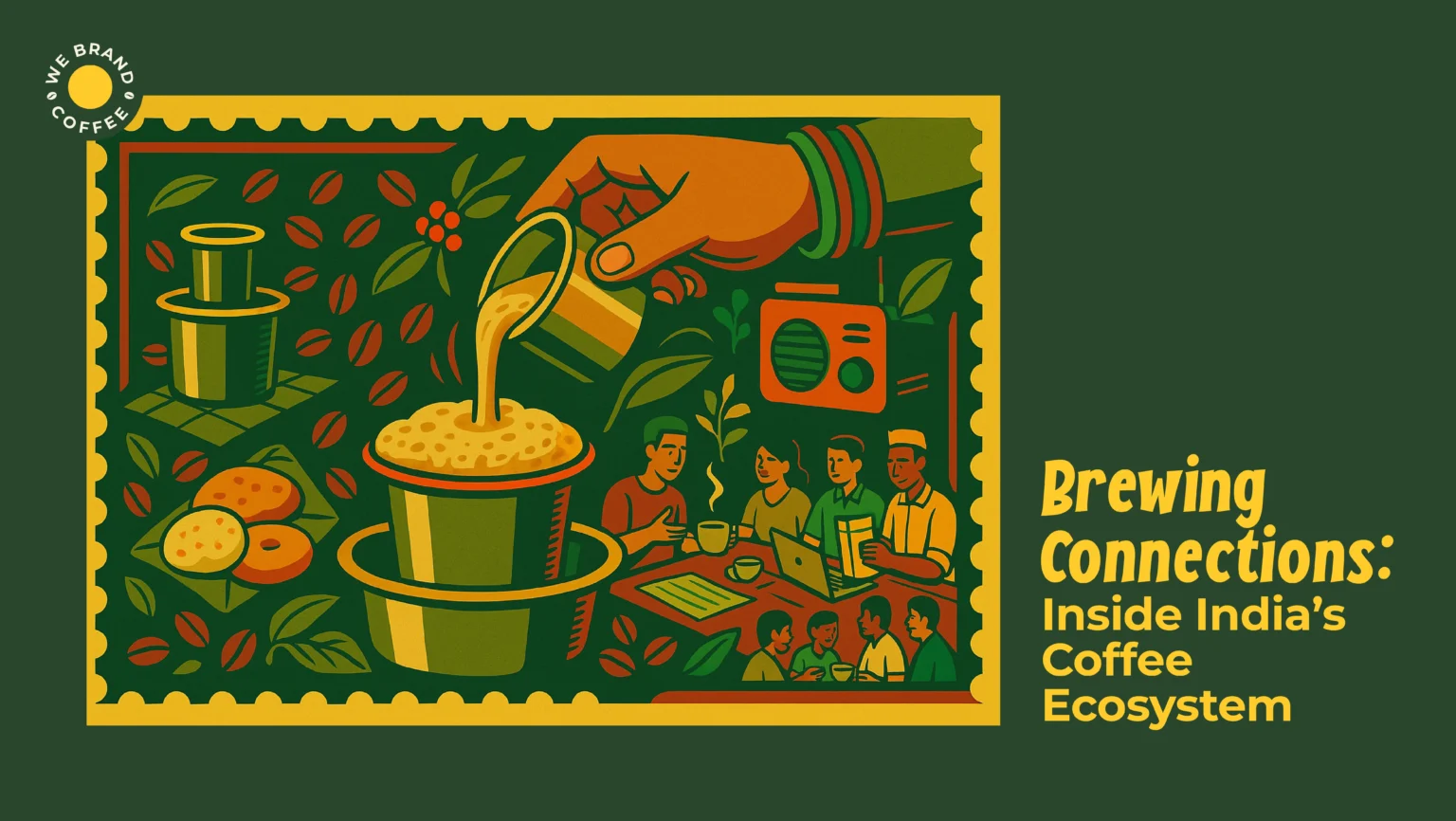Nagaland Coffee: India’s Hidden Gem Brewing Global Acclaim in 2025

Recent Posts
Share this article:
Long overshadowed by the coffee giants of the South, tucked away in the misty hills of Northeast India, a quiet Nagaland coffee revolution is brewing. What began as a grassroots effort in the remote tribal villages is now earning nods from international connoisseurs with authenticity and sustainability.
One characteristic supporting the global growth of Nagaland coffee is the flavour each bean of Nagaland coffee holds. Nagaland coffee is more than the nutty or fermented flavour notes, it is the flavour of people’s story, tradition and a land long overlooked by the global market. Be it the artisanal micro-lots grown by indigenous farmers or the emergence of bold, locally rooted Nagaland coffee brands, the movement around Nagaland coffee in Nagaland is no longer a whisper.

WeBrand Coffee’s Quest for Nagaland Coffee
Behind every cup of Nagaland coffee is a passionate community, a deep-rooted culture, and a commitment to protect yet promote the forest-grown resilience of Nagaland coffee aroma on a world stage.
WeBrand Coffee’s recent participation in Coffee Canvas 2025 gave us a deeper appreciation for the remarkable journey of Nagaland’s coffee beans, from local farms to the global stage.
Whether exploring tribal-grown Nagaland coffee or meeting passionate coffee advocates, our founders, Mr. Ashish Mathur and Mr. Rahul Kumar Nayak, were inspired by their experience. Gathering the same, we’ve put together this blog to share a hidden story of Nagaland coffee with you.
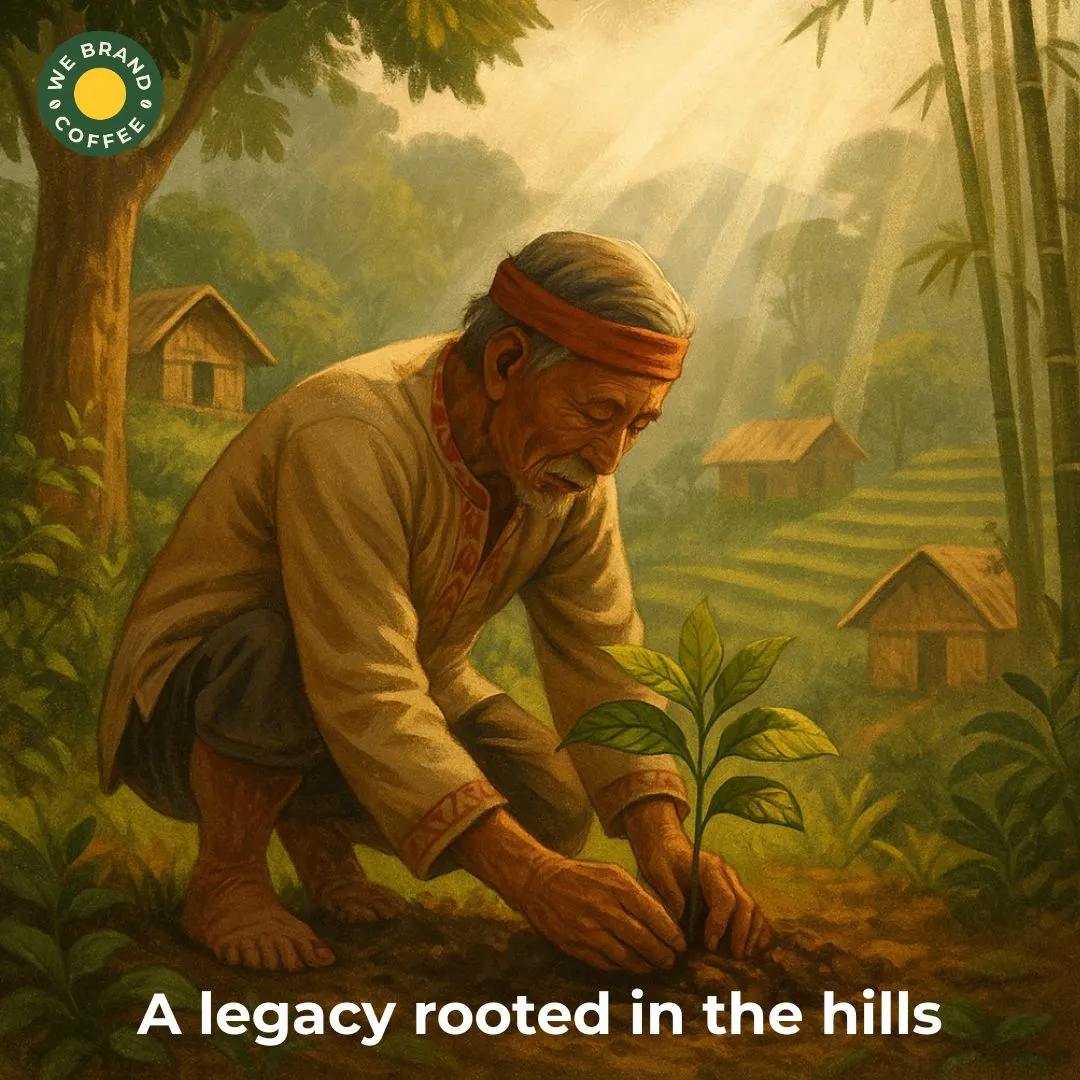
The origins of Nagaland coffee: A legacy rooted in the hills
You have heard of Ethiopian beans and Colombian blends, but have you tasted beans from the fertile forest floors to the sunlit slopes of Nagaland’s terrain? Long before the world took notice, Nagaland coffee was being nurtured by its people who blended in to become a symbol of identity and pride of the land.
Be it the altitudes or benefits of climate, Nagaland coffee bends more towards an ideal Arabica coffee. However, what truly sets Nagaland coffee apart is the dedication to organic and learnings from the traditional jhum cultivation practices to cultivate global level coffee beans.
With such a method of minimal chemical use and seasonal crop rotation, Nagaland Coffee ensures that its coffee is grown with minimal ecological disruption.
Having said that, Nagaland coffee is not a recent phenomenon. First introduced during the British colonial period, the poor infrastructure then limited market access. It was not until the early 1980s that the Coffee Board of India initiated focused efforts to promote coffee cultivation in Nagaland.
Following this, tribal plantations were set up in the districts of Mon, Mokokchung, and Phek. This initiation made Nagaland coffee begin gaining real momentum across the 67% forest cover land.
Today the story of Nagaland coffee is reclaimed not just as a crop but as a symbol of indigenous enterprise. The Land Resources Department(LDR) of Nagaland has taken the lead in reviving Nagaland coffee cultivation with authenticity rooted in resilience.
What makes Nagaland coffee unique?
All of us have heard of Arabica coffee and Robusta coffee, but in the far corners of India Nagaland coffee is brewing at the rhythm of hills. Reflecting the dedication of land, labour, and legacy, Nagaland coffee holds distinct flavour notes in the most sustainable, community-driven manner.
What makes Nagaland coffee truly unique is the powerful symbol of agro-ecological innovation it holds.
Let us explore the spirit of the hills in understanding what sets Nagaland coffee apart:
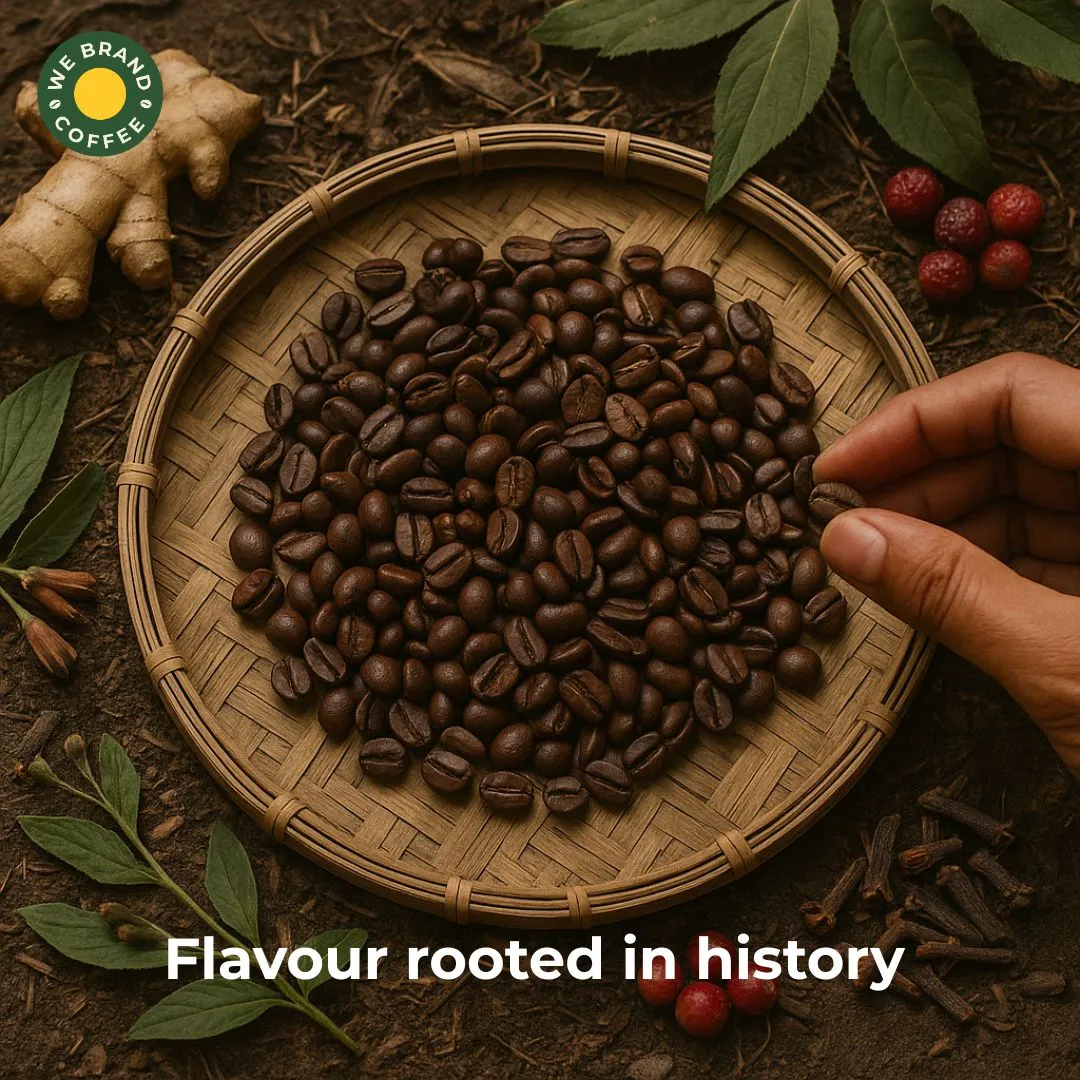
- Flavour rooted in the hills’s history
Nagaland coffee holds a distinctive flavour profile that is earthy, and spicy alongside having a touch of fruity notes. Where most coffees from southern India have a bolder, more acidic aftertaste, Nagaland coffee offers a mellow body with balanced acidity.
Moreover, the hints of forest herbs, wild berries and perry undertones give Nagaland coffee the native flora influence.
- Locally loved and mindfully made
What makes Nagaland coffee stand out is the fact that it is not mass-produced but handcrafted. With traditional processes such as shade-grown under indigenous tree species like alder, jackfruit and wild cherry. The handpicked coffee cherries by tribal farmers make sure only accurately ripened fruits are harvested and sun-dried on raised beds.
This not only preserves aroma and reduces carbon footprint but also enhances the quality while preserving the natural environment.
- Sustainable
When it comes to Nagaland coffee, sustainability is a tradition with tribal communities practising eco-friendly farming for generations. Practices such as agroforestry models integrating coffee with fruit trees and medicinal plants and zero synthetic pesticide usage supported by natural composting and mulching with forest leaf litter give Nagaland coffee an organic touch.
All in all, Nagaland coffee not only has a unique flavour but also translates a taste of Nagaland’s harmony and community. Hence by embracing sustainability and single-origin coffee, Nagaland Coffee holds its pride in the unique undertone.
Coffee culture in Kohima: Rise of the Nagaland Coffee House
From sleepy streets to lively cafes, How did a quiet hill town become the stage for a blend of passion, place and people? The rise of the Nagaland Coffee House marks more than a trend and a signal of a cultural shift in the capital.
Once primarily known for tea-loving habits, over the past five years Kohima has seen an explosion of Nagaland coffee houses. Be it the emergence of Nagaland coffee under the “farm-to-cup” movement or the youth yearning for lifestyle experiences, the Nagaland Land Resource Department has connected over 8,000 farmers across 10 districts.
Here are a few standout Nagaland coffee houses that lie in the heart of Kohima:
- Nagaland Coffee( Zonal Taxi Stand)
Being a flagship coffeehouse under the Nagaland coffee initiative, this cafe showcases Nagaland coffee beans with modern aesthetics and a warm service. Nagaland Coffee acts as a platform for promoting local farmers.
- Ete Coffee Roasters
The cafe has been standing as a pioneer in the local Nagaland coffee speciality movement. They not only source beans locally but also take the customers on a brewing experience by showing techniques and flavour profiles. This makes Ete Coffee Roasters a hub for both enthusiasts and curious first-timers.
- D’Cafe(Jail Colony)
Unlike others, D’Cafe offers a rustic charm and a local community vibe. Being a favourite amongst students, artists, and remote workers, it is one of the few cafes that regularly host open mics, indie performances and workshops over a cup of Nagaland coffee.
Moreover, the growing culture of Nagaland coffee is a reflection of much wider societal changes. A change grounded in local identity empowered youth and a collective return to roots, land, and flavour.
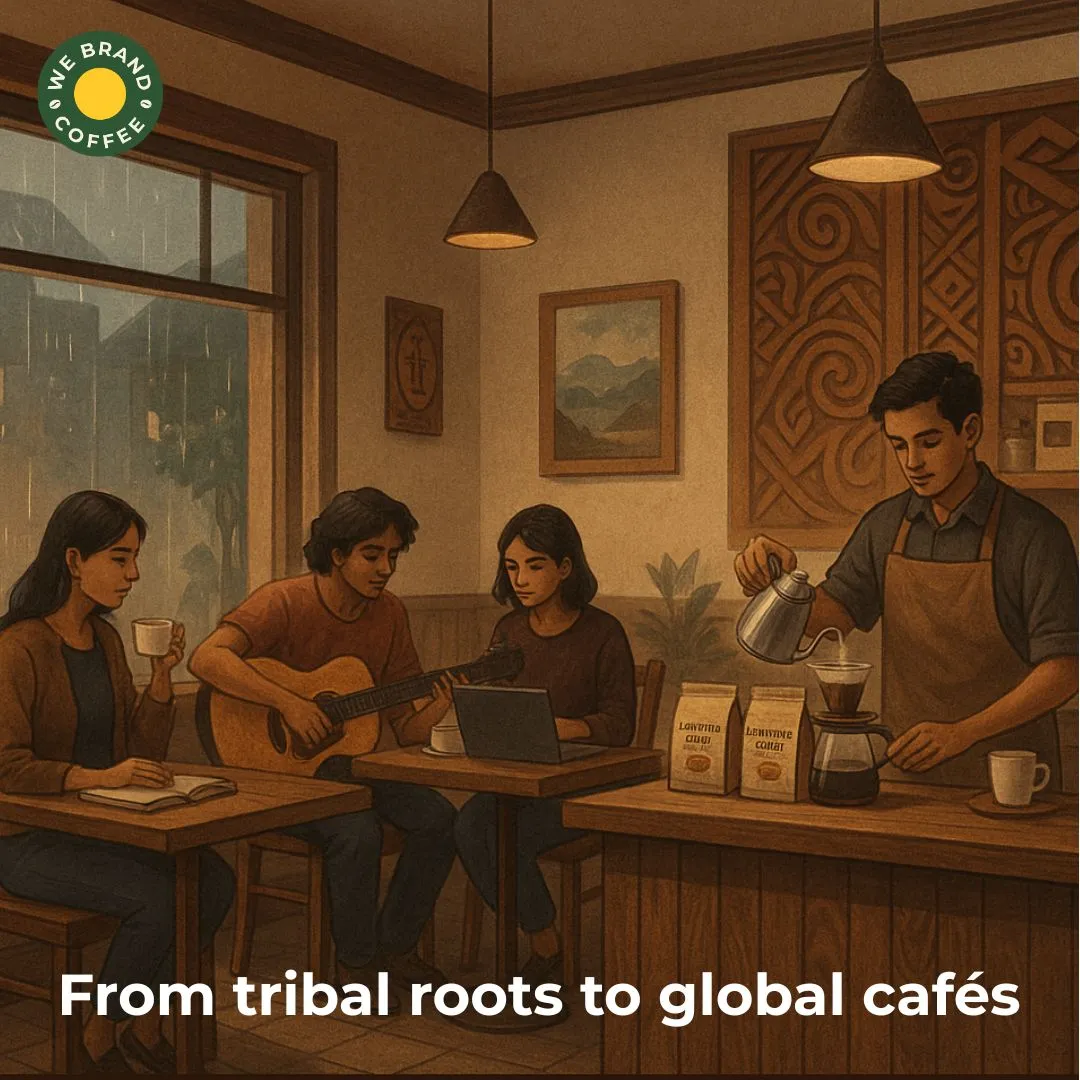
From local to global: How Nagaland coffee is gaining international acclaim?
Rooted in tradition, grown with care from the tribal hands to international cups Nagaland coffee carries more than flavour. What makes Tokyo, Berlin and New York brew Nagaland coffee conversations?
Nagaland Coffee’s journey to the global coffee market began in the late 2010s driven by the initiatives from the Nagaland Land Resource Department(LDR) and the Coffee Board of India.
It was for the first time in 2022, that Nagaland coffee made headlines with its first official coffee export to South Africa. This marked a breakthrough for a region that has traditionally been cut off from trade routes and represented Nagaland coffee at the World of Coffee Expo in Athens.
Described as having an earthy, fruity, and spiced profile, the Nagaland coffee beans have been reviewed by global cupping panels as well in India and Singapore. Nagaland coffee scored above 84+ on the Specialty Coffee Association ( SCA) scale.
So what truly accelerated Nagaland coffee? The subtle answer beyond its organic flavour lies in the power of branding. Be it local storytelling, or sustainability-first messaging alongside a minimalistic aesthetic and regional identity Nagaland coffee has travelled miles.
The future of Nagaland coffee: What is brewing next?
No doubt that Nagaland coffee has made its mark from remote hills to global shelves. However, can this humble Nagaland coffee bean from the hills shape India’s specialty coffee future?
We believe that the journey of Nagaland coffee has been rich but the most exciting brews of Nagaland coffee are bold and bright. Be it through innovation, collaboration and global vision, the future of Nagaland coffee is now positioned to become an origin of global repute.
Moreover, the state government through the Land Resources Department is actively scaling efforts to boost both the production and international visibility of Nagaland coffee.
In contributing to the future of Nagaland coffee, certain initiatives have been taken, which include:
- An expansion of the Nagaland coffee plantation area to over 10,000 hectares by 2030
- Support for organic certification of Nagaland coffee especially when it comes to remote tribal belts
- Participation in international expos such as World of Coffee and India Coffee Week
- Facilitation of MoUs with global buyers and global buyers and speciality coffee roasters.
Additionally, the Coffee Board of India and several international partners have also been supporting the rise of Nagaland coffee by aiding fermentation techniques and processing innovations to match international standards. The next steps include the integration of Nagaland coffee tourism and Geographical indication ( GI) tagging of Nagaland Coffee. Hence, the future of Nagaland coffee is as bold as the flavour it holds with local innovation and global opportunity.
Brewing heritage: How Nagaland’s tribal coffee is captivating the world in 2025?
As the specialty coffee scene evolves, every coffee bean from the sacred soil to the global shelves of Nagaland coffee is rooted in indigenous knowledge and untouched terrain. In 2025, coffee enthusiasts around the world ask for the bold, earthy soul of Nagaland’s tribal coffee.
What truly led Nagaland Coffee to captivate the world is a humble movement rooted in tribal heritage, driven by women, and sustained by the local community. Be it the sun-drenched terraces of Zunheboto or the shaded groves of Mon, Nagaland coffee is no longer just a product. Nagaland Coffee brews heritage through its true legacy.
Here are a few aspects that have led Nagaland Coffee to captivate the world:
- Tribal tradition
With Nagaland coffee being grown predominantly by indigenous tribes such as Ao, Sumi, Lotha, and Konyak, the communities have been the essential bridge between ancestral knowledge and economic self-reliance. By using the age-old intercropping methods, the tribal farmers grow Nagaland coffee under a forest canopy alongside ginger, oranges and native trees.
The result? A Nagaland coffee bean with a distinct flavour profile while preserving the ecological integrity of the land.
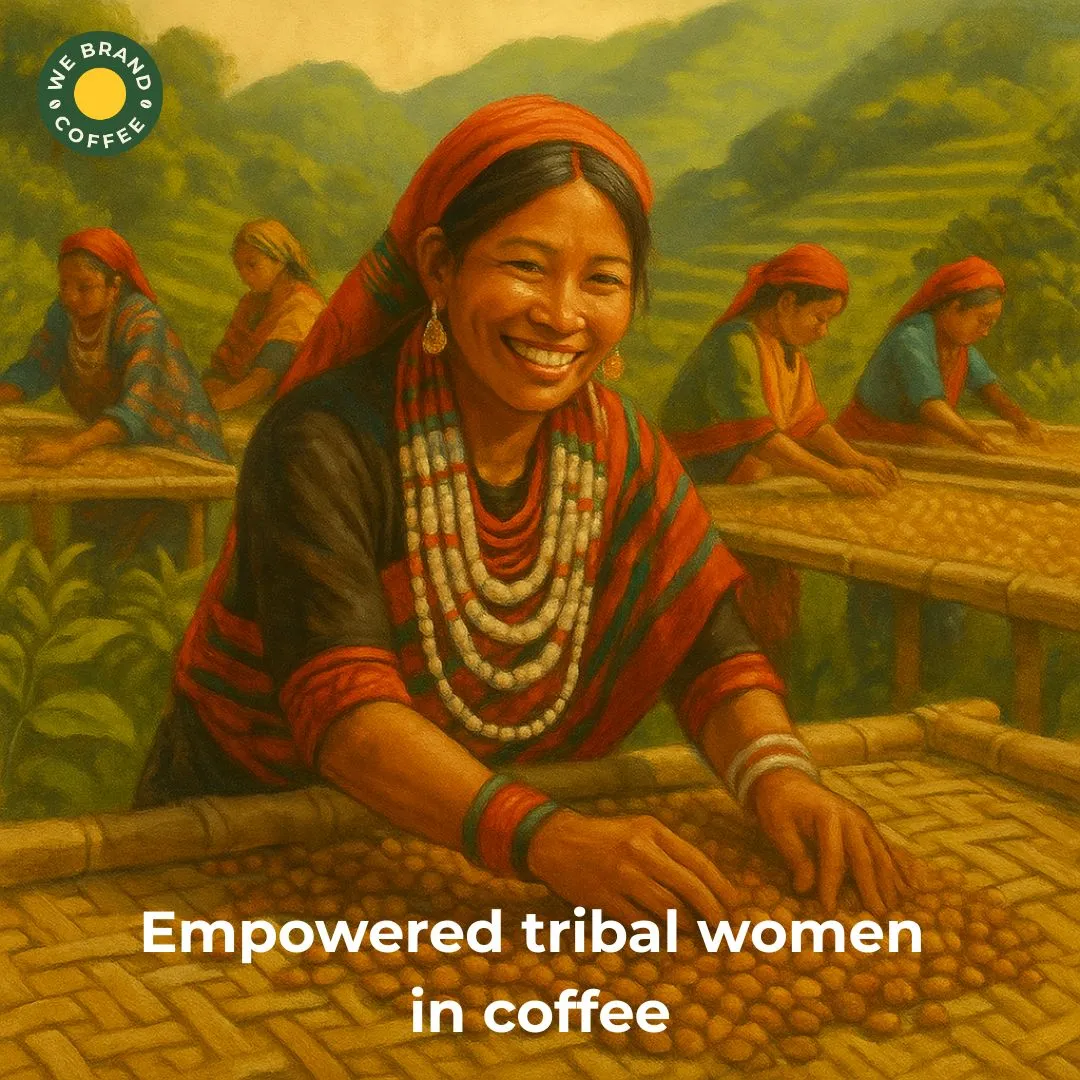
- Women behind the beans
A small aspect that has taken Nagaland coffee to a global level is a woman’s hand. Meticulously tending, picking, drying and sorting beans under the sun requires the soft and intricate touch of a woman. For example, a farmer and cooperative leader in Zunheboto has mobilized over 80 women across five villages in Nagaland from a smallholder to local roasters and buyers in Delhi. These women are no longer just labourers but entrepreneurs, educators and advocates of sustainable Nagaland coffee in and across their community.
- Artisan producers
What else is helping Nagaland coffee captivate the world is the rise of artisan coffee. Nagaland coffee is sourced directly from tribal cooperatives giving them a higher rate than the local market rates to craft artisan coffee. The rise of artisan Nagaland coffee is backed by training youth in techniques like cupping, roasting, and barista skills. This helps in creating an ecosystem of skill and dignity for Nagaland coffee in a state where unemployment is high.
- Community, culture and coffee
The fierce price Nagaland coffee holds is not just for its flavour but also for the people who grow it. Hence, the authenticity of farmers speaking of their land with reverence, referring to the trees as ancestors and the Nagaland coffee as a new heirloom makes it more fascinating on a global ground.
The hand-built drying beds and bamboo storage sheds make the entire process of cultivating Nagaland coffee mindful and communal.
Moreover, the global success of Nagaland coffee is not driven or built on the scale but on the soul. Nagaland Coffee is a story of the land’s people, their identity, community and resilience. Nagaland coffee carries a taste of region, generations and strength that is deeply rooted in the hills and hearts of Nagaland.
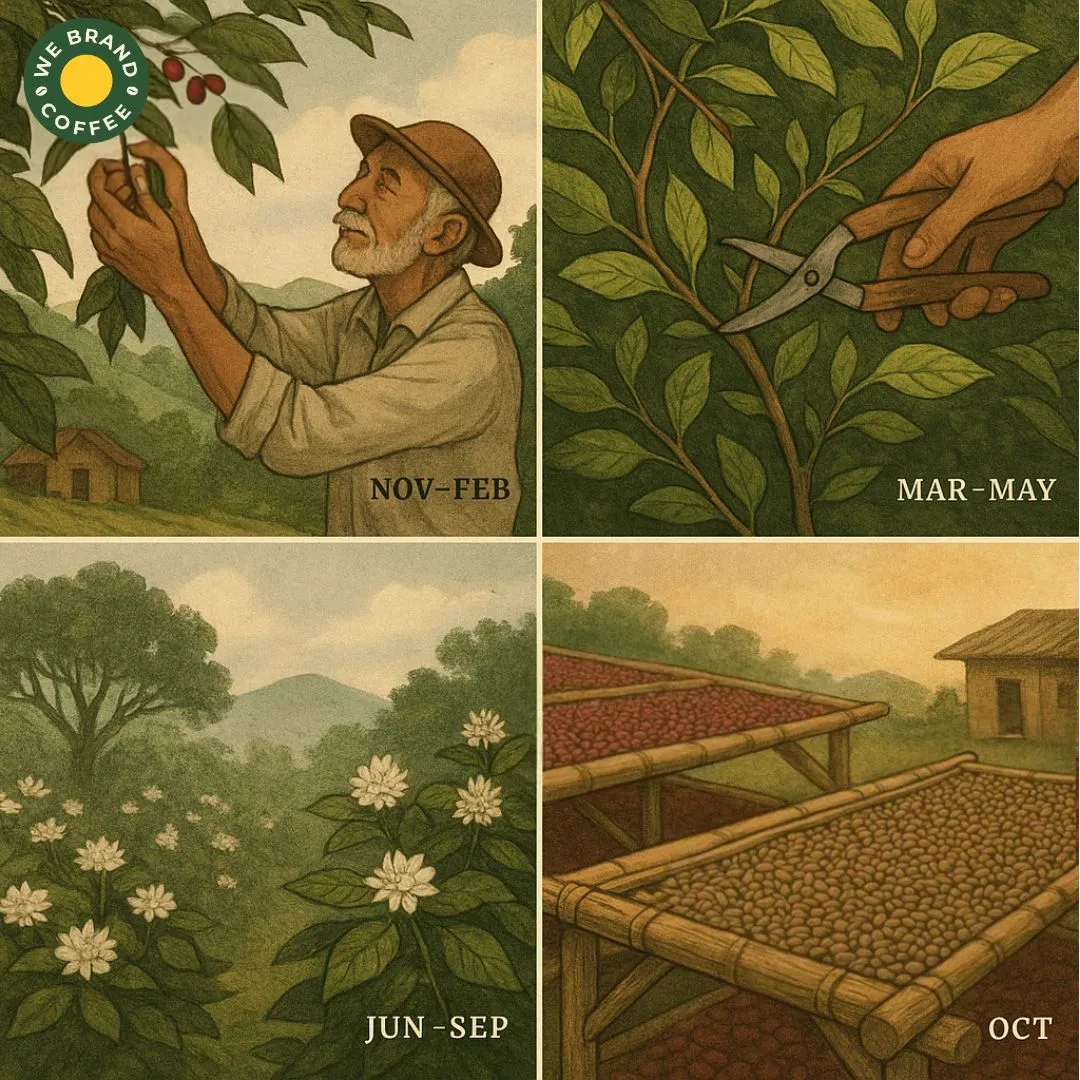
Coffee in the clouds: Why Nagaland’s terrain is a brew master’s dream?
When we are talking about specialty coffee, terroir is everything. The altitude, untouched soil, and soul of Nagaland coffee are nurtured by the rugged terrain that holds the potential to deliver every element a coffee brewmaster dreams of.
Be it the rich soil, high altitude, or slow-growing climate, Nagaland’s hills are the new secret ingredient in each cup of unforgettable Nagaland coffee.
Let us see what makes Nagaland an emerging terroir for coffee brewers and roasters across the globe!
- High quality with high altitude
The altitude at which the coffee is being grown plays a crucial factor in cultivating speciality Nagaland coffee. With elevations ranging between 1,000-1,500 meters above sea level(MASL), it helps in slowing down the coffee cherry’s maturation. This slowed-down process helps in allowing more time for the sugars and flavour compounds to develop. Alongside this, the cooler night temperature enhances the acidity and reduces bitterness which makes Nagaland coffee ideal for filter brews, pour-over and an espresso with a twist.
The result of such a process is a denser Nagaland coffee bean and a much more complex cup of profile holding a brighter acidity and nuanced flavours.
- Organic matter-rich soil
Nagaland, on a major scale, has a loamy and volcanic soil coverage. This is not only naturally enriched but is also enhanced by forest litter and organic compost. With almost no chemical input, most Nagaland coffee farmers maintain an organic practice when it comes to growing Nagaland coffee.
The loamy soil holds high humus content which not only improves water retention but also root aeration which are the most vital components for growing a healthy cherry. Moreover, the pH levels of most land coverage ranges between 5.5 and 6.5 which is ideal for cultivating Nagaland coffee.
- The microclimates
One of the major benefits that Nagaland gets is from the unique subtropical monsoon climate. The cool mornings, foggy hillsides and well-distributed rainfall ranging from 1800-2500 mm annually make Nagaland a near-perfect environment for coffee.
Such major microclimate advantages are the morning mist and diffused light that hold the potential to reduce the heat stress on the Nagaland coffee plants. Along with that, Nagaland coffee gets ample shade from native tree species such as bamboo and jackfruit. This natural wind buried and the desired elevation reduces pest infestation in Nagaland coffee which in return minimizes pesticide usage.
Altogether, this rare interplay of altitude, soil and microclimate offers Nagaland coffee the consistency of flavour profiles. Be it the earth undertones from rich forest soil or the spicy aromatics reminiscent of clove, ginger or similar wild herbs, the natural integrity of the Nagaland coffee bean is preserved in the science of the terrain.
Nagaland coffee is not a crop for the people there; rather it holds a sense of flavour that has been cooled by the clouds, fed by the rich forest soil and sheltered by the variety of locally grown crops.
Hence with origin-driven complexity, Nagaland coffee marks truly a brew master’s dream in the clouds.
Seasonal Brews: How does Nagaland’s coffee harvest tell a story of the land?
Every season leaves its signature on Nagaland coffee, in Nagaland coffee is not just harvested it is harvested from the first rains to the final sun-drying with the fragrance and feeling of seasons across the year.
Let us see how each bean of Nagaland coffee is marked as a seasonal event and becomes a theatre of tradition and transformation in the world of coffee!
- November to February: A window into the hills
Nagaland coffee primarily begins to be harvested in late November and extends through the months of early February. This marks the time when the coffee cherries are at their peak ripeness. This period matters because it offers a clear and dry sky which is ideal for handpicking and sun drying Nagaland coffee.
- March to May: A pruning bless
Once the harvest ends in February, the spring marks the time to prepare the plants of Nagaland coffee for a new season of growth. This is the time when the health of Nagaland coffee is checked and carefully pruned.
- June to September: Monsoon rains and flowering
During these months, Nagaland is drenched in moisture which triggers the flowering across the Nagaland coffee plants. Hence, the landscape transforms as plants bursting with white, jasmine-like blossoms. This marks the beginning of cherry formation. During these months the farmers also focus on the soil health for cultivating the Nagaland coffee.
- October: First sign of cherry ripening
Upon the retreat of monsoon, the Nagaland hills turn dry and the green Nagaland coffee cherries begin to ripen. The Nagaland coffee slowly turns yellow, orange, and finally red. This stage is often called “ veraison” and during these months timing is crucial. Hence, farmers began to scout the Nagaland coffee plants daily and lay them on hand-made drying beds and mats.
To sum up, the life of a Nagaland coffee farmer is not governed by machines but rather by pure observations, intuition and tradition. This whole process throughout the seasons results in a full year being distilled in a single cup of Nagaland coffee.
Why now is the time to discover Nagaland’s coffee?
Growing from a hidden gem to a rising star, Nagaland Coffee stands at the forefront of India’s coming coffee revolution. Long overshadowed by the legacy coffee regions of Coorg and Chikmagalur, Nagaland Coffee is now stepping confidently onto the global stage and allowing individuals to explore the rich, earthy and soulful brews of Nagaland coffee from the hills.
Here is what makes it the right time for Nagaland coffee to be discovered:
- Rapidly emerging origin in India’s speciality coffee scene
- Terroir unlike anywhere else in India
- Sustainably grown and community-driven
- Perfect for conscious travellers and coffee tourist
Hence, if you are someone looking for a coffee that not only wakes you up but grounds you in culture, community and consciousness then Nagaland coffee is the cup of coffee for you!
Conclusion
In conclusion, At Coffee Canvas 2025, WeBrandCoffee didn’t just discover a coffee, rather we discovered a calling. We saw untapped potential, not just in the product, but in the people, the process, and the profound story behind every cup.From the mist-laced hills of Nagaland to the global spotlight, the story of this soulful brew mirrors everything we stand for: authenticity, community, and identity.
We are actively partnering with the emerging Nagaland coffee producers and cafés to co-create global-ready brands. By fusing their deep-rooted legacy with our cutting-edge branding strategies, we’re building more than coffee labels—we’re building movements.
This is our promise: to give Nagaland coffee the stage it deserves, and help it resonate with hearts and palates across continents.


